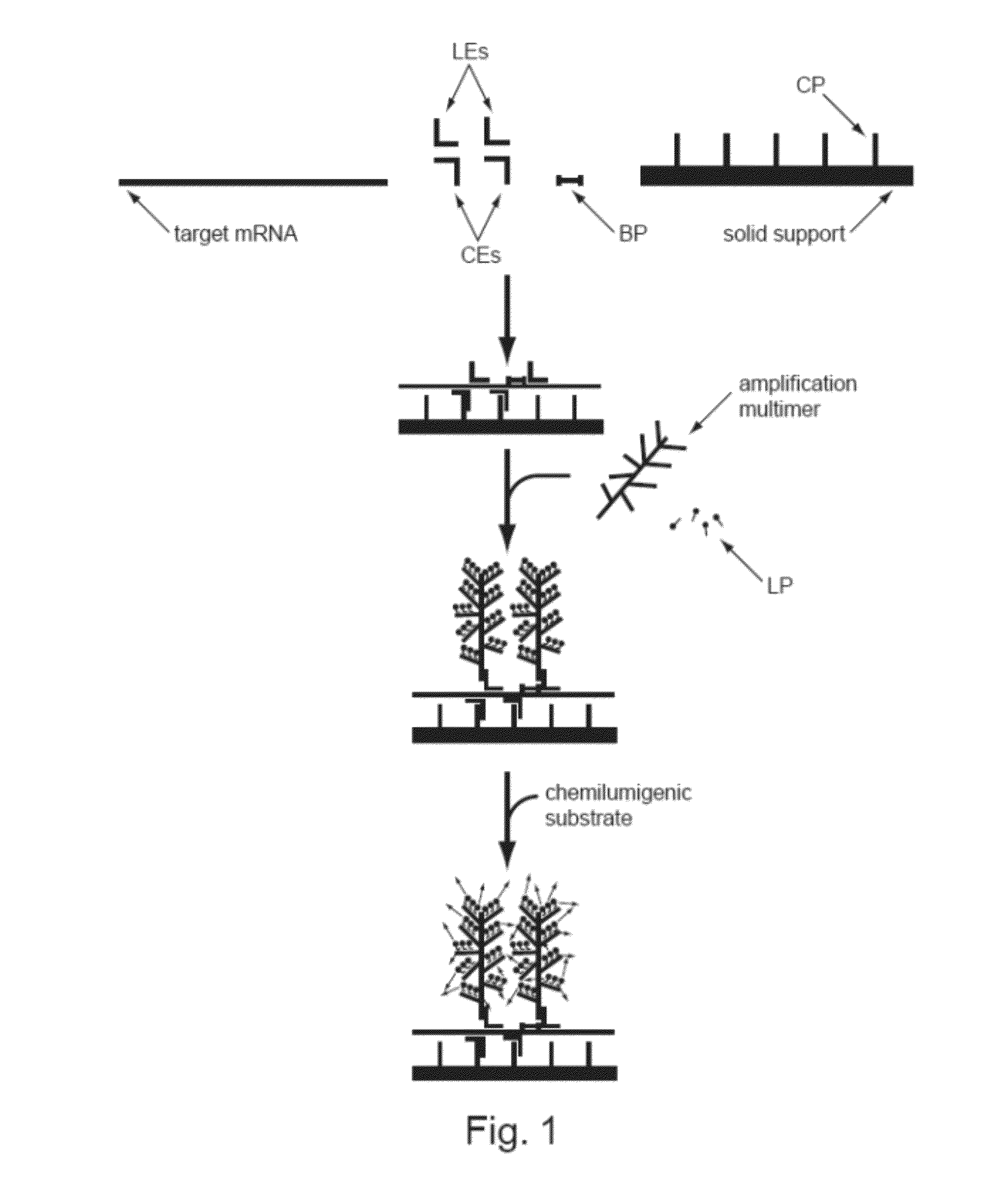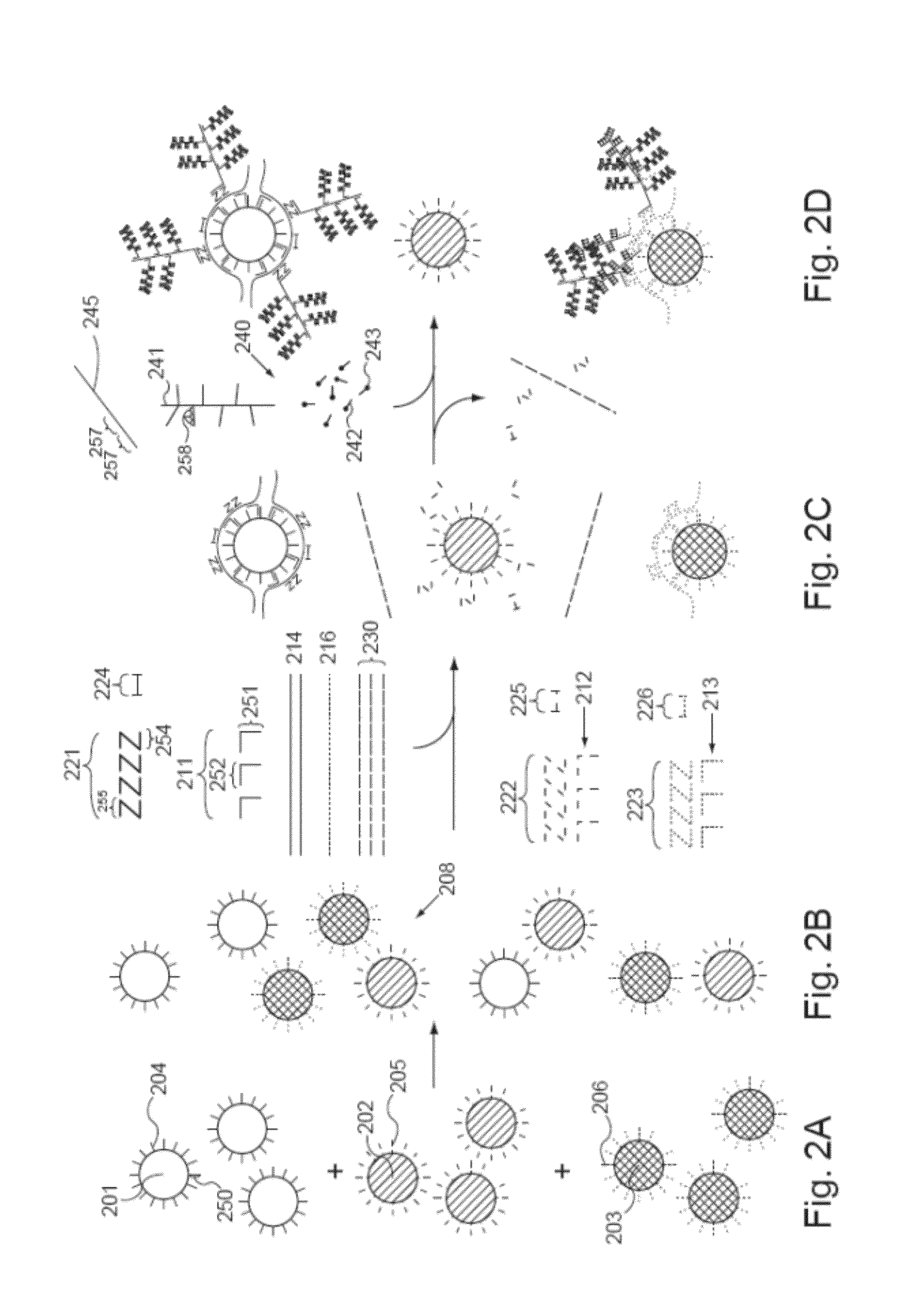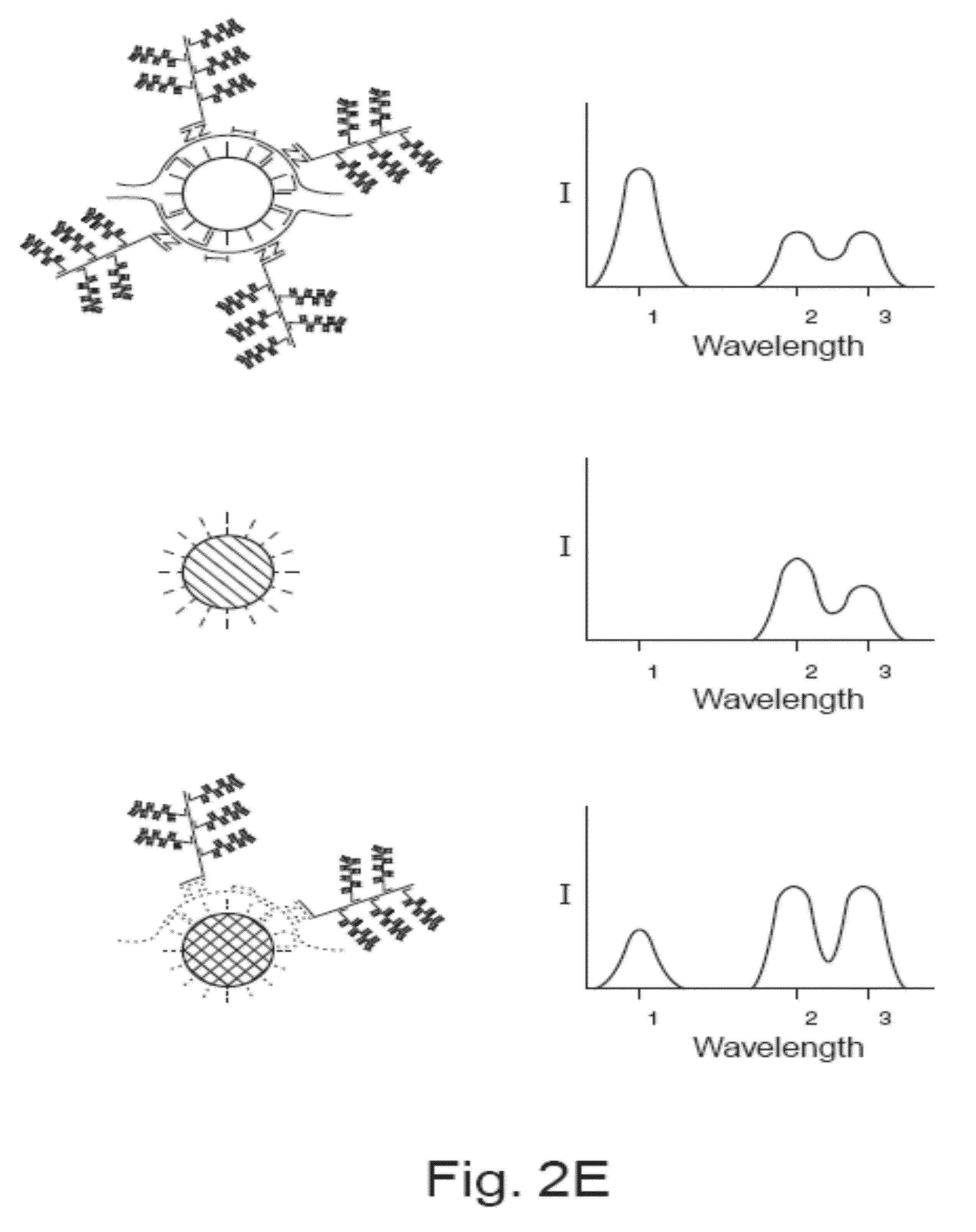Detection of Nucleic Acids
a nucleic acid and detection method technology, applied in the field of detection of nucleic acids, can solve the problems of difficult to adjust the length of the oligonucleotide probe to provide difficult to discriminate closely related sequences, and difficult to achieve the desired specificity and sensitivity. achieve the effect of easy modification
- Summary
- Abstract
- Description
- Claims
- Application Information
AI Technical Summary
Benefits of technology
Problems solved by technology
Method used
Image
Examples
example 1
SNP Detection
[0273]In the present experiment, SNPs were detected in RNA targets of approximately 20 base pairs, in situ using the QUANTIGENE® ViewRNA protocol. In these assays, no capture probes or capture extenders are utilized since there is no need to capture the target nucleic acids onto a solid surface. The samples are placed onto a solid surface, such a slide or well but not directly covalently attached to the surface. Each target contained 0, 1 or 2 SNPs. The RNA targets were synthesized using known protocols and purified to homogeneity. RNA target probes were then transfected at 15 nM into HeLa cells using known transfection protocols and reagents, such as DeliverX (Panomics, Santa Clara, Calif., see website for transfection protocols, incorporated herein by reference for all purposes). Label extenders were designed in the “Double Z” (ZZ) format as depicted, for instance, in the right panel of FIG. 9A. Cell were prepared as in the published QUANTIGENE® ViewRNA User Manual pr...
example 2
siRNA and mRNA Detection In Situ
[0277]In the present experiment, HeLa cells were plated at a density of 4000 cells / well on 96-well plastic bottom plates (Thermo Scientific Nalge Nunc, Int'l., Rochester, N.Y.) which were pre-treated with Poly-L-Lysine. Cells were allowed to grow for 2 days under standard tissue culture conditions for HeLa cells. Using a non-residual volume protocol, cells were fixed in 4% formaldehyde and cross-linked with 0.16 M EDC. Briefly, the non-residual volume protocol calls for aspiration of all but a few microliters of assay solution from sample wells throughout the entire assay. This prevents drying of the cells between manipulations and minimizes cell loss due to over-aspiration / dispension manipulations of samples. Cells were then treated with protease to permeabilize the membranes. The type of protease used for this protocol was Protease XXIV (Sigma-Aldrich, MO, also known as alkaline protease, protease from Bacillus licheniformis), at a concentration of ...
example 3
GAPDH siRNA Detection in HeLa Cells
[0283]Protocol was similar to that described for Example 3. Briefly, HeLa cells were plated at a density of 8000 cells per well on 96-well plates which were pretreated with Poly-L-Lysine. Cells were allowed to incubate overnight under typical tissue culture conditions. The following day, the HeLa cells were transfected with FAM-labeled or unlabelled GAPDH siRNA at a final concentration of 15 nM using the QUANTIGENE DeliverX product and protocol (Panomics, CA). Cells were again incubated overnight at standard HeLa cell tissue culture conditions.
[0284]Target sequences and probe sequences utilized in this example are as follows, where capital letters in the Probeset sequences indicate the use of cEt nucleic acid analogs and lower case letters indicate use of normal or wild type nucleic acids and “LE1” and “LE2” indicate the LE L-1 sequences, one for each LE:
[0285]GAPDH-siRNA Sequence:
CAUCAUCCCUGCCUCUACUTT-sense(SEQ ID NO: 116)AGUAGAGGCAGGGAUGAUGTT-ant...
PUM
| Property | Measurement | Unit |
|---|---|---|
| volumes | aaaaa | aaaaa |
| diameter | aaaaa | aaaaa |
| diameter | aaaaa | aaaaa |
Abstract
Description
Claims
Application Information
 Login to View More
Login to View More - R&D
- Intellectual Property
- Life Sciences
- Materials
- Tech Scout
- Unparalleled Data Quality
- Higher Quality Content
- 60% Fewer Hallucinations
Browse by: Latest US Patents, China's latest patents, Technical Efficacy Thesaurus, Application Domain, Technology Topic, Popular Technical Reports.
© 2025 PatSnap. All rights reserved.Legal|Privacy policy|Modern Slavery Act Transparency Statement|Sitemap|About US| Contact US: help@patsnap.com



